Career change? Making a living from weaving. At Lowimpact.org we’re interested in helping to bring production back to communities, and so we’re talking with craftspeople, smallholders, natural builders, renewables installers and small business owners in our range of topics. I’ll be asking them about their jobs, and for advice for people who might be interested in doing similar things.
This is the first of a three-parter. I want to get Eloise’s:
- advice for anyone considering a career as a weaver (this article)
- opinions on the sustainability of weaving and craft production (Part 2)
- ideas about how craft production and mutual credit are a match made in heaven (Part 3)
Hello Eloise
Hi Dave
Could you give us your full name and the name of your business / website?
My name is Eloise Sentito and my business is These Isles.
I liked your website because you’re producing useful things, rather than just ornamental things. they’re very beautiful, but they’re for using, not just looking at.
Thank you. I’m at a crossroads with my business. I have to scale it up a bit and treat it as a ‘cottage industry’. Up to now, I’m distracted by my artistic tendencies, so that every piece is different. But it’s still all anchored in clothing and thing that are useful. I like the integrity of useful artefacts. William Morris said ‘don’t have anything in your home that you don’t believe to be both beautiful and useful’.
I want to talk about all the things that people need to know if they’re thinking of potentially making a living from weaving. Just a bit about you – what were you doing before this? what made you want to change and how did you learn how to do it?
I was teaching in higher ed, but also running an upcycling dressmaking business. Wedding dresses, party dresses, festival dresses – selling them at festivals and markets. It barely broke even, but I started to want to leave the educational job in the city. I was living on a smallholding, so wanted to do something to complement smallholding. My mother was a shoemaker when I was a child, so I knew something about the craft business. And the internet provided other opportunities to sell. I knew my products would be too expensive to sell in local markets. I needed a wider audience. Handmade goods have to be more expensive if craft people are to make a basic living wage. So I taught myself weaving. I thought we could get sheep to provide the wool. Also I was in upland farming country, with lots of fleeces around. I learnt from youtube videos, plus a very good book – A Handweaver’s Pattern Book – the Handweaver’s Bible. I’m quite practical – I looked at the loom and worked it out, with a bit of help from a friend. (NB if you’d like your hand held a bit more, we have an online course).
What kit do you need, how much does it cost and where do you get it from?
I started with a very simple 22 inch table loom, that I’d been given by a housemate. He had an engineering background, and it’s funny, because crafts are both art and engineering at the same time. A 22 inch table loom is very simple – just wood, wire and string. Very ecological, and you can pick them up easily on eBay. There’s also something called the Loom Exchange. Even simpler than a table loom for a beginner is the rigid heddle loom, which will also sit on a table top.

I guess once you have a basic loom, you could try to make items for yourself, to see if you’re any good at it. It will be frustrating at first, and you can’t run a business from day one. Your efficiency builds.
Exactly. For yourself, friends or family. Chunky sheep’s wool is forgiving and doesn’t break easily.
So maybe a hobby first.
Maybe – although it was never a hobby for me – I just went straight in as a business. I don’t find it stressful as a job – I find it very soothing. Having worked in a stressful city job in education, with an employer squeezed by capitalism, as we all are, I needed to get out. Weaving seemed like an opportunity to do that.
What’s your working day like now – what’s the process like?
A bit too much time on the computer for my liking, but the weaving part of the day is great. I could make a batch of shawls – maybe 4 over the course of 3 weeks – from start to finish, including marketing and selling. I spend a lot of time designing, looking at yarn combinations, making calculations, and dressing the loom.
What does that mean?
Winding the warp – winding the wool from cones onto the frame, with pegs on it, which gives 32 feet of warp – and there might be 300 warp threads, which are longitudinal. They’re tied together, taken off the warping frame and put onto the loom. This is either a new project, or you’re tying the wool to an existing project. So dressing the loom is putting the warp wool onto the loom. Then you’re ready for the actual weaving, which is passing the ‘weft’ back and forth on a shuttle, through the warp threads to make your cloth.
And so you make scarves, blankets – what other sort of things?
Blankets and throws, but mainly clothes – like snugs / neckwarmers, like this one (see video, around 14.20).
Wool?
Yes – I only want to use sustainable fabrics, and there’s so much wool produced in this country. There are arguably far too many sheep on the highlands, causing overgrazing, preventing reforestation etc. It’s contentious.

Could you use other natural materials?
Yes. It’s difficult to compete with wool in terms of warmth and comfort. But cotton, linen and hemp are great for shirts, skirts, maybe jackets. They’re planted as mono-crops though, so also not ideal for biodiversity etc. I think hemp is one of the greenest fibres though. I’ve got a poncho here (see video, 16.30), made with wool from sheep from the Hebrides, undyed. It’s pretty sustainable compared to textiles made in this country. I’ve mixed it with some Himalayan nettle – handspun, from my local market. A small import business import from Nepal. The green weft is spun by women in Nepal using drop spindles. So slow and labour intensive.
Fair trade?
Not certified, because the businesses are too small, but it is fairly traded.
Since 2015 I’ve been running my business from a motorhome, and travelling around. So when I’m in the Hebrides I can get Hebridean wool, which is great. I don’t plan to go to Nepal, and I don’t know how to give this poncho a sustainability rating, because these are wild nettles, harvested and entirely worked by hand by peasant women whose lifestyle is phenomenally sustainable compared the impact we in the West have. And yet it’s imported from Nepal – so I don’t know if I’ll be continuing with it.
And this isn’t a bad country for growing nettles.
Exactly, and there’s a great group called Nettles for Textiles, set up by a friend of mine called Allan Brown, and that grew exponentailly after he made a video about making textiles from nettles.
I think we have that video on the Lowimpact site. So what kind of marketing do you do? How do you sell?
It used to be craft fairs and festivals. Maybe markets. The fairs range a lot in terms of quality. So it doesn’t work for me to try to sell expensive, high-quality products next to products that are cheaper and lower quality. The higher-end fairs tend to feel exclusive, so I didn’t just want to be in that niche either. Then Etsy and social media happened, and although I resent it in many ways, because it’s corporate. But I use their tools to reach my audience all over the world.
Needs must.
Capitalism doesn’t work for heritage crafts or local markets. It works when you can import your crafts from India or China, from a poorer country with a much cheaper labour force. For local craft, it doesn’t work, because people can’t afford your time to make a shawl, that will cost £400, when they can get one from India for £100, or something from a sweatshop in China that costs £20. So I have to reach unusual people who are committed to our ideas, and paradoxically, about a third of my customers are in the US. I tend to rant about the vagaries of capitalism, and the need find relatively wealthy customers. But a lot of my customers have modest lifestyles, but they’d rather buy one shawl and have it last a lifetime, than lots of cheap shawls. But the people who want to do that are scattered around the world. Etsy allows me to reach them. I knew I’d have to do that to reach the right people.
I want to come back to price later. I want to talk more about the practicalities of the job first. So is it possible to make a living from crafts in the UK?
I don’t know. If I owned a couple of acres, and had built a house and was producing a lot of my own food, firewood etc, and was doing some barter, then the money I currently earn would be enough. So yes, you can make a living if your living is modest. If you’re trying to cover normal housing costs, maybe not. You talked about support in a previous conversation. You can get support from the Guild of Spinners, Weavers and Dyers. Training, professional membership, advice etc. I haven’t looked into funding support. I have enough hoops of my own to jump through, so I don’t want to jump through other people’s hoops. But there are ways to get funding and investment, yes – I just haven’t done it myself.
Are there any other ways you could get income from it – eg running courses, writing, online courses etc?
Yes; although personally I want to focus on making and selling.
Highlights
- I started with a very simple 22 inch table loom, that I’d been given by a housemate. He had an engineering background, and it’s funny, because crafts are both art and engineering at the same time. A 22 inch table loom is very simple – just wood, wire and string. Very ecological, and you can pick them up easily on eBay.
- I learnt from youtube videos, plus a very good book – A Handweaver’s Pattern Book – the Handweaver’s Bible. I’m quite practical – I looked at the loom and worked it out, with a bit of help from a friend. (NB if you’d like your hand held a bit more, we have an online course).
- A lot of my customers have modest lifestyles, but they’d rather buy one shawl and have it last a lifetime, than lots of cheap shawls.

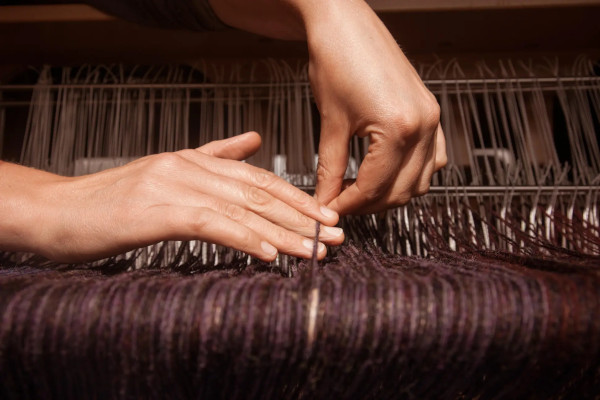
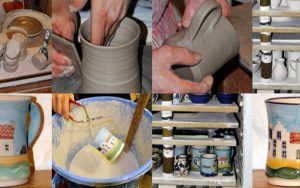
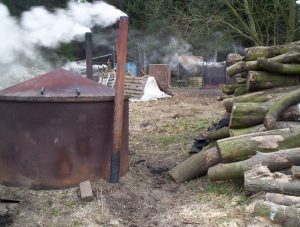
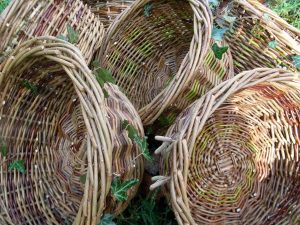
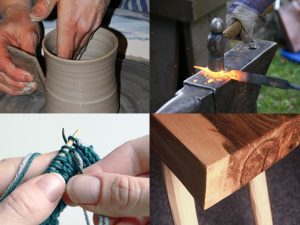






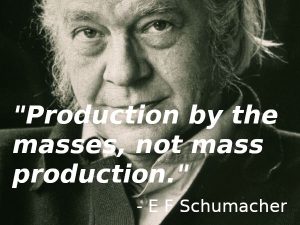
1 Comment
The problem with crafts as Eloise wisely remarks, is that they may well be part art and part engineering.
It is certainly true of Bee keeping/ breeding, that if you want to make a living from your partnership with
them, you have to do the microscopy science, of placing the fresh ova in the artificial queen cells,to
make real, profitable progress!